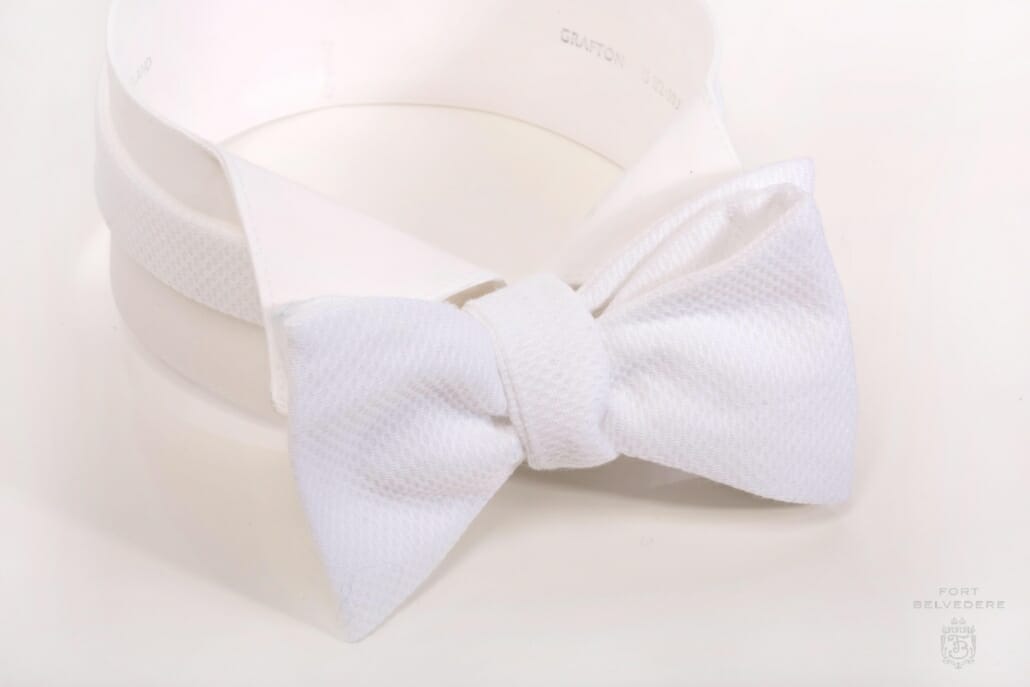
The Full-Dress Bow Tie
The white full-dress bow tie is almost always made from cotton piqué (marcella in the UK), the material of choice since the 1930s. It is considered especially smart if the tie is of the same type of piqué as the waistcoat and, if applicable, the shirtfront, although that might be difficult to achieve unless all white tie accessories come from the same brand.
Bow Tie Shapes

The bow tie is traditionally semi-butterfly or batwing shaped as described in Classic Black-Tie Neckwear. Back in the day you could find many different white tie shapes including ones with pointed ends but as white tie is increasingly more rare, most gentlemen stick to the classic semi-butterfly shape.

Sized Self-Tie Bow Ties Are The Only Proper Option
It should go without saying that a self-tied model is infinitely preferable to a factory-assembled version. If pre-tied neckwear is considered unrefined in a relatively informal office environment then it can only be viewed as downright gauche in the context of an ultra-formal society ball, royal state dinner or Nobel Prize ceremony.

White tie may be a virtual uniform but it is a gentleman’s uniform and a gentleman appreciates the human touch of a slightly irregular hand-tied knot compared to the cold perfection of a pre-fabricated contraption.
Most marcella bow ties today have a size adjuster to save on stocking cost for the retailer. After all, it is a lot less expensive to stock just one size fits it all rather than 10 sizes.
However, unlike with classic black tie, which often features a turndown collar black tie shirt, a white tie shirt always has a wing collar. That means, and an adjuster will be visible on the collar and that simply looks tacky. Even worse, the hook mechanism might fall off while you move and putting it back on is not easy. Therefore save yourself any embarassment and opt for the essential genlteman’s choice: a sized white Marcella bow tie or a single end bow tie.

When tying the tie, keep in mind that formal bow ties are meant to be worn outside the wings of the collar, not tucked behind them.
Finally, unless you are a waiter or a butler you must never wear a black bow tie with a tailcoat. Ever.

Standard versus Single – End Bow Tie

The standard is the regular bow tie style in a fixed necksize. In the 1930s, particularly dapper gentlemen introduced the single end bow tie to create an even more elegant look. The advantage is that it does not have any adjusters, yet it is a one-size fits it all. We also decided to offer a smaller single end white tie bow tie because it is perfect for men who have a more modest built or vintage lovers who would like to introduce a small period appropriate bow tie to their full dress ensemble.
Learn How To Tie A Bow Tie
How to Tie a Standard End Bow Tie
How to Tie a Single End Bow Tie
Explore this chapter: 10 White Tie Guide

